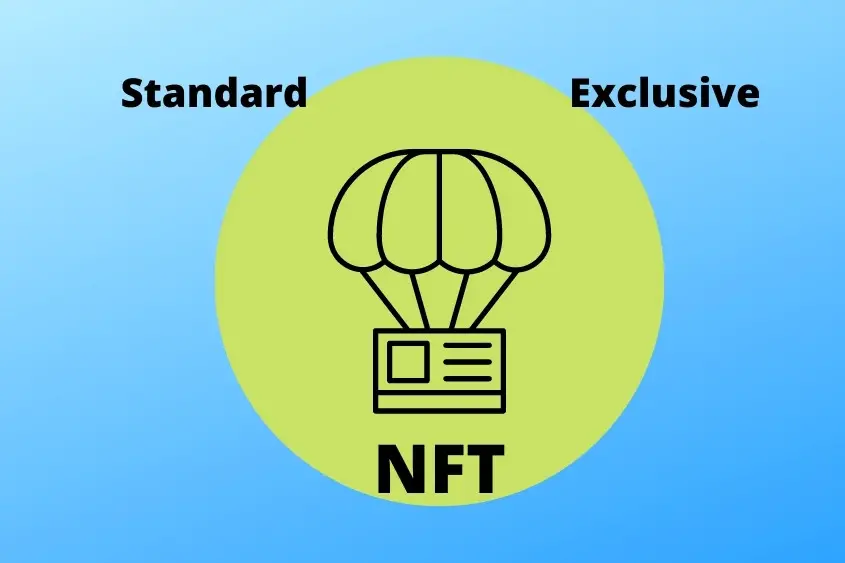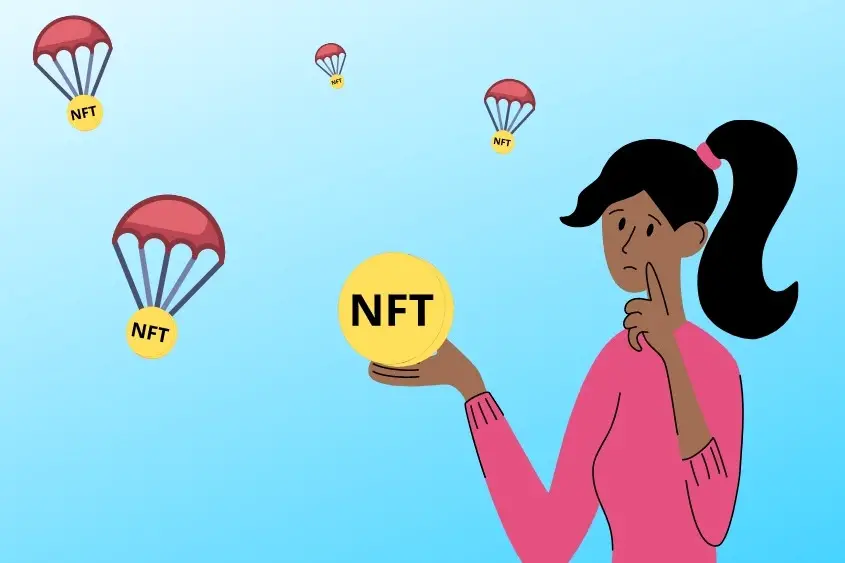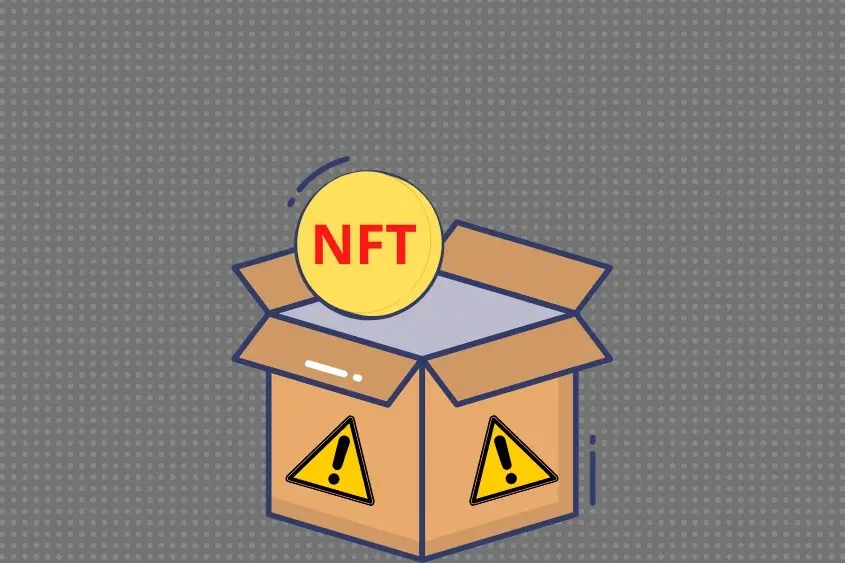If you’re in the NFT space you’ve likely heard of people making bank claiming free NFT airdrops. That said, many people have been scammed trying to claim these free tokens. I know because I’ve taken part in countless NFT airdrops and have seen the good, the bad, and everything in between.
So what’s an NFT airdrop? In this article, I’m going to break it all down for you including what it is, how to claim one, and the common red flags to watch for. Look out below!
What Is an NFT Airdrop?
An NFT airdrop provides holders with additional tokens and non-holders the chance to claim a token. Creators use airdrops to add value to their NFT projects, build a stronger community, create hype, and reward existing holders. Airdrops are usually free and require little to no action to claim.

Airdrops are generally promoted via a company’s website and social media platforms. To qualify for an airdrop you might need to execute a particular task, such as tagging your friends on social media on the project’s post, interacting with the community, or creating some sort of content like a blog post or a cold logo.
Most commonly, NFT airdrops are implemented as a promotional strategy used to draw attention to an NFT project or an associated event. But that’s not all they’re good for. They’re commonly provided to current holders of a token as a gift and may even be an extension of the original NFT they purchased.
Below we’ve listed the 5 types of NFT airdrops.
What Are the Different Types of NFT Airdrops?
Bounty Airdrop
A bounty airdrop occurs when you complete a specific task. These tasks often have the end goal of raising awareness for the NFT project. Such tasks might include sharing a social media post, inviting and recruiting new followers into the project’s Discord group, and even creating something unique for the brand.
In exchange for completing these tasks, you will either gain a certain amount of points used to determine your eligibility or you might be automatically entered into a raffle where you have the chance to receive the airdrop.
Holder Airdrop
A holder airdrop rewards current token holders with an additional NFT. This type of airdrop is usually determined by the type of NFT you hold in a certain collection along with the number of tokens you hold.
For example, if you own 5 NFTs from a collection you’d receive 5 airdrops. Additionally, only certain NFTs from a collection may be eligible for an airdrop.
Since everything is recorded on the blockchain, creators of projects have the ability to view who currently holds their NFT; as a result, they can make sure to send the airdrop to the current holder rather than a previous holder.
Exclusive Airdrop
An exclusive airdrop rewards certain people for participating in a specific event, task, or some sort of contribution to the project.
Things like purchasing a physical product, attending an IRL event, spending time with the community, or helping build a project are all examples of how one might become eligible for an exclusive airdrop.
Gary Vee is known to do exclusive airdrops often. There has been a number of times when users that are consistently active in his Discord receive a VeeFriends NFT. He has also airdropped NFTs to those who have purchased a physical product of his, as a thank you.
Raffle Airdrop
If the number of people interested in an airdrop exceeds the available number of tokens, a raffle may occur and only the randomly selected wallets will receive the airdrop.
A raffle spot can be earned by holding an NFT, earning points for tasks, or by expressing interest. The NFT project will usually state how many raffle spots are available and what you have to do to enter. This encourages FOMO which in turn increases hype.
Standard Airdrop
A standard airdrop requires the least amount of effort. By simply expressing your interest in an airdrop you have the chance to receive one. All that’s asked of you is to provide your wallet’s public address so the token can be sent to you.
That said, a standard airdrop is generally limited in quantity and may be time-sensitive. Hence, you have a limited amount of time to provide your wallet details to receive your NFT airdrop.
What’s the Point Of an NFT Airdrop?

NFT airdrops generally occur if you hold an NFT from a certain community or brand. These communities will distribute airdrops to holders to either add additional value and utility, as a marketing ploy, or to raise awareness about a specific event or goal.
When you get something for free, you’re more likely to talk about that product or company. This is an age-old method of building a customer base. NFT airdrops are just like giveaways. You have to be eligible, then the company picks random individuals to receive the airdrop.
Sometimes when you purchase an NFT, future airdrops may be a predetermined perk of owning that NFT. One example comes from the VeeFriends NFT project.
Upon purchase of a VeeFriends NFT, consumers knew that they would receive a ticket via airdrop that gives them access to VeeCon—a first-of-its-kind Web3 conference built around NFTs, Pop Culture, Entrepreneurship, Marketing, and Innovation.
The point is, sometimes an NFT airdrop is a surprise, other times it may be part of the initial purchase of an NFT. Either way, who’s complaining?
How to Claim an NFT Airdrop

To claim an NFT airdrop you need to provide your public wallet address to the project or connect your wallet to the claim site. If you’re part of the NFT project that is executing the airdrop, you might not have to do anything as they already have your wallet info.
When claiming an airdrop, I highly recommend using a wallet with nothing in it. That way if you fall victim to a scam, there’s nothing for the scammers to steal. This is important as you never truly know if an airdrop is legit until after you claim it.
Of course, if the airdrop is an extension of an existing project you’re apart of the token will be sent to the wallet where your original asset is stored. If this is the case, be sure to double-check the airdropped token is legit by verifying the creator. It should be the same as your original NFT.
If it’s not, this should be a major red flag. Don’t interact with it until you can get some clarification from the community and a statement from the project’s official social media account.
Where to Find NFT Airdrops?
You can find NFT airdrops on a project’s official website, Twitter profile, Discord Channel, Instagram, and even through email. Before claiming an airdrop be sure that the claim is legit. You can do this by verifying you’re visiting the right pages and profiles. Also, ask the community and the Discord group.
There are tons of opportunities to claim a free airdrop on platforms like Twitter. But just because they’re available doesn’t mean you should take part in them. Oftentimes they are just a scam.
Why Are Airdrops So Important?

As a brand promotional tool, airdrops are critical to the NFT and Web3 community’s success. They also provide an opportunity for brands to offer extra value to their users in the future. Also, when compared to traditional marketing approaches, airdrops allow individuals and businesses to establish new relationships and further develop existing ones.
It also allows them to promote their products and services simply and cost-effectively. Think of airdrops like sudden offers from supermarkets, Black Friday sales, buy 1 get 1 offer, etc. All of these offers nurture the existing relationship with the customers and build new ones.
Many new customers are drawn to such offers and become lifelong members. NFT airdrops can work the same way. They serve the purpose of advertising and gaining new customers while giving the existing holders something in return.
Are NFT Airdrops Safe?

Not all NFT airdrops are safe. Airdrops that are sent to you randomly should be considered spam and should not be interacted with. If you have to connect your wallet to a claim site, do so with caution. If you’re part of a project that announces an airdrop, you can assume it’s safe.
Here are some red flags to watch for when claiming an NFT airdrop.
- The claim site requests that you pay a fee (apart from the transaction fee).
- The airdrop requests private info from you like your wallet’s private key, secret phrase, or password.
- The site that you connect your wallet to requests access to your wallet.
- You notice an airdrop offer from an NFT project you’re a part of but haven’t heard anything from the project’s official social platforms.
- Someone sends you a link to an airdrop in your DMs or email (most common).
- The offer is too good to be true.
Overall, an NFT airdrop is usually rewarded to current holders of an NFT, or as a reward for completing a task for a brand, which in return, brings more people to that brand.
Really, airdrops are a win-win for both consumers and the brand, but be careful, because not all airdrops are good, especially if it’s random or the offer just seems too good to be true.

6 thoughts on “What’s an NFT Airdrop and How Does It Work?”
Comments are closed.